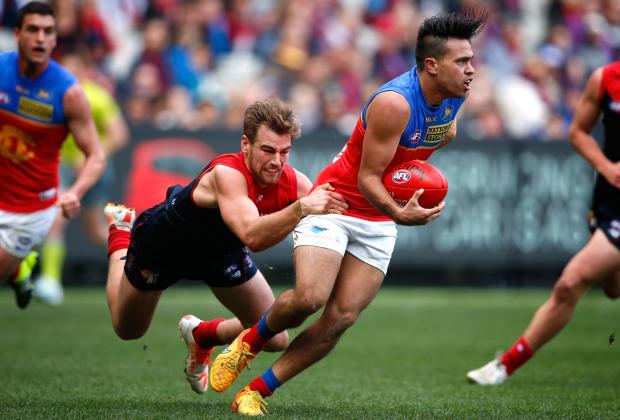THE BEST game and the worst game of round 16 both threw up similar stoppage numbers, reinforcing the difficulty lawmakers face in addressing perceived problems with on-field congestion at the elite level.
The Melbourne-Brisbane Lions clash had just five more stoppages (82-77) and six more secondary stoppages (31-25) than the classic Showdown in Adelaide, with Port Adelaide and Adelaide contesting one more boundary throw-in (38-37).
Stoppage numbers don't include centre bounces, so the difference in aggregate scores between the two games was not a factor in increasing the Showdown stoppage numbers.
However no one would pretend the games were equivalent contests from an aesthetic point of view.
Statistically, the rate of scoring was the obvious difference with the Showdown's aggregate score of 229 points the second highest of the season.
By contrast, Melbourne and the Brisbane Lions scored just 96 points between them, managing the lowest aggregate score for a game this season.
Do higher scores mean better games then?
Not necessarily.
The highest aggregate score for the season came a week earlier when West Coast and Adelaide scored 236 points and the result was clear by half-time.
The other differences between the Showdown and Sunday's 'slowdown' don't show up on a statistics sheet; rather, they are more intuitive.
The two SA teams battled it out in front of a heaving stadium with a finals spot on the line, while the other clash was played by two battling teams in front of 25,149 people, with many players still learning the game at the highest level.
No rules can manufacture that situation.
Conditions were fine for both games but the tolerance for skill errors seemed different. Showdown mistakes were largely forgiven due to pressure, while the 'slowdown' mistakes were bemoaned.
The numbers showed the kicking efficiency was higher in the 'slowdown' (65.3 per cent) than the Showdown (64.6 per cent) although the pressure in both games was reasonably good.
The figures indicate that what constitutes a good game depends on many variables beyond style of play. The quality of individual players on each team is an understated factor in the current debate.
At its best, Melbourne plays a very watchable style but as coach Paul Roos acknowledged, another A-grade midfielder would add many possibilities.
There is also the small matter of close games determining the way spectators feel about the experience.
In 2015, there have been just 10 games decided by a goal or less, a significant drop from 15 nailbiters in the first 16 rounds last year, following 17 in 2013 and 16 in 2012.
Adelaide won an emotion-charged battle by three points whereas the Lions did not get closer than 20 points to Melbourne after the 28-minute mark of the first quarter.
What Sunday reminded us was that the AFL's laws of the game committee will need to rely as much on gut instinct as the numbers when determining what, if any, changes are needed.
Of course, none of that is to argue that the numbers are not important.
Enough people acknowledge congestion as an issue to make the debate worthwhile and for suggestions to be heard, but the variables that separate great games from run-of-the-mill affairs are hard to pinpoint – and equally hard to manufacture.
Allen Christensen breaks away from Dom Tyson in the Demons-Lions clash. Picture: AFL Media


